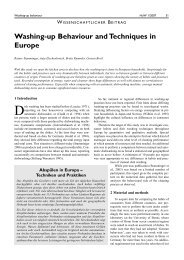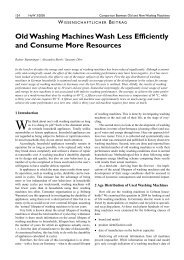Development of a novel mechatronic system for mechanical weed ...
Development of a novel mechatronic system for mechanical weed ...
Development of a novel mechatronic system for mechanical weed ...
Create successful ePaper yourself
Turn your PDF publications into a flip-book with our unique Google optimized e-Paper software.
Materials and methods<br />
become a possibility. The question now is whether it is more beneficial to<br />
continue to rely on and seek to further improve physical prototyping or to switch<br />
over to a virtual prototyping centred testing process. Virtual prototyping <strong>of</strong>fers<br />
many significant advantages over physical prototyping that makes it worthy <strong>of</strong><br />
consideration and use.<br />
4.2.2 Advantages <strong>of</strong> virtual prototyping<br />
The advantages <strong>of</strong> virtual prototyping have caused it to become widely used in<br />
the academic and industrial sectors. The most important advantages include<br />
cost savings in labour and materials, nearly immediate feedback from prototype<br />
testing, increased possibilities <strong>for</strong> design variations and shortened time from a<br />
concept to a market ready product.<br />
Many designs are unique and they entail a lot <strong>of</strong> trials to eliminate errors in<br />
order to achieve the first prototype ready <strong>for</strong> manufacturing. Time demanding<br />
development results in higher costs and delays in prototype production. The<br />
time delays are <strong>of</strong>ten <strong>of</strong> vital concern, because the progress in design is <strong>of</strong>ten<br />
halted awaiting the results <strong>of</strong> prototype testing. Often the data required from a<br />
prototype test is essential to the next design decision.<br />
Usually trained lab technicians, and not the designer, carry out the testing. This<br />
means, that the designer needs to take a lot <strong>of</strong> time to explain and describe<br />
what he exactly hopes to gain out <strong>of</strong> the test. The understanding <strong>of</strong> the<br />
experiment is potentially subject to error, and it is sometimes the case that the<br />
designer does not get all data that he would have liked from a prototype test<br />
and the experiment needs to be repeated. Also, motion experiments with a<br />
conventional physical prototype can take a lot <strong>of</strong> time and <strong>of</strong>ten it is hard to<br />
conduct explicit measurements.<br />
On the other hand use <strong>of</strong> virtual prototypes reduces the build-test-analyze<br />
process from weeks or even months, when all the delays are factored, to terms<br />
<strong>of</strong> minutes and hours. A simulation-ready model is simply an assembly <strong>of</strong> all the<br />
parts that have been designed, so a virtual model can be built just by defining<br />
the relations between parts and their motion constrains. The power <strong>of</strong> virtual<br />
43





